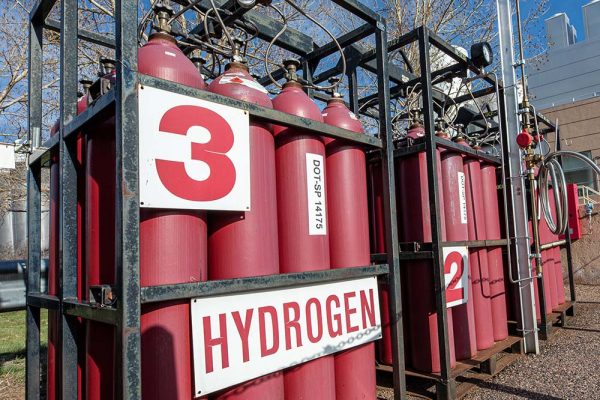With three Texas energy projects now competing for a piece of the $7 billion pie set aside by the U.S. Department of Energy for hydrogen development, there is considerable hype around the state’s potential to lead the nation in accelerating the 2050 transition to net-zero. But to meet that goal, we must stay grounded in reality.
Known as “hydrogen hubs,” the three Texas energy projects are among 33 others in the running to be one of the maximum 10 ultimately chosen to receive the funding.
These hubs will play an instrumental role in helping achieve the Department of Energy’s new goal of increasing annual clean hydrogen production 400% in just 20 years, from 10 million to 50 million metric tons between 2030 and 2050, while at the same time reducing the cost of clean hydrogen 80% in less than 10 years, from $5 per kilogram today to $1 per kilogram by 2030.
Getting there will be no small feat, considering approximately 95% of the hydrogen produced in the U.S. today is from natural gas heated with steam in a process known as steam methane reforming, or SMR, which is single-handedly responsible for about 5 million metric tons of CO2 annually — more than the annual CO2 emissions of 190 different countries.
However, if we pair SMR with carbon capture and sequestration technology, or CCS, the result is low-carbon hydrogen.
One advantage of this pathway is that it can be integrated with technologies and infrastructure, such as natural gas pipelines, that have already scaled. CCS is also a proven technology that has been in use since the 1970s.
Today, the U.S. Geological Survey estimates the country has 3,000 metric gigatons of CO2 storage capacity — that’s more than 500 times the roughly 5 gigatons of CO2 emitted annually in the U.S.
Another way to produce clean hydrogen is through an electrolyzer, which uses electricity to split water into its constituent elements — hydrogen and oxygen — via electrolysis. If the electricity comes from zero-carbon resources like nuclear, hydropower, wind, solar, or even fossil fuels coupled with CCS, the result is low-carbon hydrogen.
But from a cost standpoint, not all of these resources are immediately viable on their own, with hydrogen produced from wind and solar renewables currently costing two to three times more than clean hydrogen produced from natural gas with CCS.
Texas is uniquely positioned to harness all of these pathways to produce cost-effective clean hydrogen at a rapid, massive scale. Already generating more renewable electricity from wind and utility-scale solar than any other state, Texas also has low-cost natural gas, favorable geological formations for CO2 storage, and robust pipeline infrastructure for hydrogen transport, as well as world-class academic hydrogen research and industry-led innovation.
Whether Texas and other states are able to support the the Department of Energy in meeting its 2050 targets depends first on whether we are able to leverage all of these abundant domestic energy resources.
After all, why would Texas, or any other state, want to limit the options available, when the goal is to ramp up production and reduce CO2 emissions as quickly as possible?
Unfortunately, there is pressure on the Department of Treasury to issue rules that will limit eligibility for a massive new clean hydrogen production tax credit, included in section 45V of the Inflation Reduction Act, to only those producers who use electrolyzers with electricity sourced from newly built clean power facilities. Such a requirement is referred to as “additionality,” and even many of its supporters agree it would add significant costs for producers.
Meeting the $1 per kilogram cost target by 2030 and achieving net-zero CO2 emissions by 2050 are challenges large enough that all technologies and solutions are needed. We should take advantage of all abundant domestic energy resources to increase clean hydrogen production volumes and bring down costs to enable an achievable transition to a renewable hydrogen economy, both in Texas and across the country.
Hugh Daigle is associate professor of petroleum and geosystems engineering at the University of Texas at Austin.
A version of this op-ed appeared in the Dallas Morning News.




